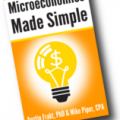Debt is hardly a fun topic, but it’s important to take seriously if you’re one of the hundreds of millions of Americans with student loans, credit card debt, mortgages, auto loans or other obligations. And if you find yourself falling behind on your payments, you might need to take big action.
“Facing your debt can feel like a daunting or even hopeless prospect and super anxiety-provoking,” debt relief lawyer Leslie H. Tayne told HuffPost. “So imagine what paying off your debt will mean for your life and goals, and remember, it’s baby steps that will get the ball rolling.”
To break the process down into more digestible steps, we asked Tayne and other personal finance experts to share their top tips for tackling debt ? and not hating every minute of it.
“Reach out for help when needed, and know you’re not alone in the process of paying down debt or building wealth,” Tayne said. “Whatever you’re ultimately working toward, visualize the end goal and remind yourself that it will all be worth the hard work.”
Start by laying out all your debts.
“Step one is to gather the most recent statements for all of your debts and organize the information,” said financial therapist Nicole lacovoni. “Create a simple spreadsheet and log every debt, the balance remaining, the minimum payment due and the interest rate. This will help you get an accurate picture of how much debt you have and what needs to be paid off first.”
Digital spreadsheets through programs like Microsoft Excel allow you to use different formatting options to sort and prioritize each debt, but you can also lay it all out in a notebook and write by hand if that feels better for you. The key is to do whatever you’ll most likely stick with in the long run.
As you create a balance sheet and evaluate your financial situation, remember that there are different types of debt, and not all is treated equally.
“There is good debt, such as debt that is deductible or used for an investment, education, or business,” said Ande Frazier, a behavioral finance expert and author of “Fin(anci)ally Free.”
Mortgages and student loans are typical examples of “good debt” that you don’t necessarily need to do anything drastic to prioritize, especially if you’ve been making minimum payments.
“Then there is bad debt, which is nondeductible and often subject to high-interest rates,” Frazier added. “Credit cards that are not paid off monthly are a prime example. Segmenting this debt is an important first step in deciding what to pay off first.”
Decide if you want to take the ‘snowball’ or ‘avalanche’ approach.
Once you’ve taken stock of what you owe and to whom, you’ll want to determine your repayment strategy.
“Decide how you want to prioritize the debt,” said Jannese Torres, creator and host of the “Yo Quiero Dinero” personal finance podcast. “There are two main ways to pay off debt: The debt snowball and the debt avalanche method.”
In both methods, you make the minimum payments on all your debts except one, which you will choose to accelerate by paying more each month. Once that debt is paid off, you can move on to another one.
“With the avalanche method, you prioritize paying off debt from highest to lowest interest rate,” Torres explained. “When the higher-interest debt is paid off, you put that money toward the account with the next highest interest rate and so on, until you are done.”
Focusing on the loans with the highest interest rates first will allow you to pay less over time and thus save more money in the long run.
“With the debt snowball method, you prioritize paying off your debts from the smallest to largest amounts,” Torres said. “Once the smallest debt is paid off, you take the money you were putting toward that payment and roll it onto the next-smallest debt owed. You continue this process until all accounts are paid off.”
As you eliminate a loan or credit card, you free up monthly payment money, so you have more cash on hand to pay off the next debt even more quickly ? creating a snowball effect.
“Most financial professionals will tell you to use the debt avalanche method due to the high-interest rates, but as a financial professional that specializes in behavioral finance, I would recommend choosing the method that fits your behavior,” Frazier said. “For example, if you are one that needs to have a quick win in order to stay consistent with a plan, then perhaps the snowball method might work better. Many people like having the feeling of getting rid of debt as quickly as possible. That feeling can allow them to be consistent with paying off debt and not get discouraged.”
Whether you need the extra motivation of the snowball method or prefer to rid yourself of those high-interest rates ASAP, just make sure you choose the right strategy for your debt repayment goals and mindset.
“Remember that you can always pivot as things change, which they always do, so be prepared,” Tayne noted.
Make a budget.
“Often, people struggling with debt need a better idea of how much money they have coming in vs. out,” Tayne said. “They may feel too overwhelmed or want to avoid facing the situation. But getting a handle on your cash flow will help you determine which strategy will be best for paying off debt as quickly as possible.”
Itemizing your sources of income and where your money is going can help you figure out your timeline and benchmarks for debt repayment. Many great budgeting apps can even pull directly from your bank accounts to break down your spending.
“You’ll want to create a budget ? aka a spending plan ? so you can look for ways to reduce monthly expenses,” Iacovoni said. “Get creative and free up as much money as you can. Make a commitment to put any extra cash toward paying off debt.”
Look out for money you might waste on unnecessary services or missed deals with competitors.
“Finding extra room in your budget to make bigger debt payments may feel impossible amid inflation, but spend some time going through your bills to see if you can find some extra savings,” advised money and budgeting expert Andrea Woroch. “Some ideas include cutting your monthly data bill by moving to an online-only carrier like Mint Mobile, increasing insurance deductibles to save up to 20% off premiums, canceling unused subscription services and unplugging unused gadgets to cut your energy bill.”
kate_sept2004 via Getty Images
Set attainable repayment goals.
“When you are addressing your debt for the first time, you need to set realistic expectations,” said Krisstin Petersmarck, an investment advisor representative at Bridegriver Advisors. “Even if you miss a goal for a month, don’t look at it as a failure of the overall plan. Move past it and get back to tackling it the following month.”
She recommended looking at your debt repayment plan as a long-term goal that won’t necessarily provide immediate satisfaction but will make you happy in the long run. That doesn’t mean you can’t enjoy the moments of victory along the way, however.
“Remember that paying down debt can take time, and the best way to make progress is to focus on small wins and micro goals so you don’t get overwhelmed,” said Mamie Wheaton, a financial planner with LearnLux. “Instead of saying, ‘I am going to pay off all my credit card debt this year,’ say, ‘I am going to stop using all my cards and pay off my card with the lowest balance in three months.’ After you achieve the milestone, you can celebrate and then set another goal.”
Budget in small rewards you can give yourself when you reach these milestones to make the process more sustainable and fun. Try to set yourself up for success as well.
“Don’t overcommit to payments you can’t easily manage,” Tayne said. “If you have a variable income, work off of the least amount of income.”
Keep up with your day-to-day progress as much as you can.
“You can even find debt repayment apps that will help you create a repayment plan and track your debt pay off efforts to help you stay motivated,” Woroch noted.
Adjust your mindset.
“It is also incredibly important that you positively adjust your mindset and focus on taking strategic actions you have mapped out so you can pay down your debts,” said Bola Sokunbi, founder of Clever Girl Finance. “By creating your plan and working out a debt payoff date, you have something to focus on and stay motivated towards.”
To successfully take action, you need to understand your spending behavior and the tendencies that drive it.
“Being open and transparent about your behavior is crucial to not just paying off the debt, but also staying free of debt in the future,” Frazier noted.
So take the time to assess why you are in debt and confront the full picture of your life and the totality of your debt as a whole.
“This can seem like a really scary slap in the face, but it’s a realist we all need to confront if we ever plan on tackling it correctly,” said Kumiko Love, a financial counselor and creator of The Budget Mom. “You have to know, understand and accept your starting place. Take time for self-discovery to understand how you got into debt in the first place. Having debt doesn’t mean you are bad with money. It also doesn’t mean you are incapable of taking back control of your finances. Having debt also doesn’t mean you must give up everything that brings you joy.”
If you share finances with a significant other, talk to them about your debt and ensure they’re on the same page as you embark on this repayment process.
“Having an accountability partner or joining a debt-free community can also be incredibly helpful to stay motivated,” Sokunbi said. “If you need extra support in mapping out a plan or negotiating with creditors, free non-profit financial counseling organizations like operationhope.org can help as well.”
Consider additional income streams.
“It’s a good idea to consider creative ways to bring income to accelerate paying off your debt, like selling things you own but no longer need or use, getting a part-time job, working a side hustle or downsizing to get the extra cash you can put toward debt,” Sokunbi said.
Additional income streams can help you achieve your debt payoff goals more quickly. Remember, you won’t have to keep up these side hustles forever, and there are plenty of great options you can even do from home.
“You can offer virtual tutoring on nights and weekends for around $20/hour via Tutors.com or make up to $1,000 a month by pet sitting via Rover.com,” Woroch said. “Both of these are flexible side hustles that you can do in your spare time and from home to help cut your credit card bill. You can even get paid for various online activities such as taking surveys, scrolling through websites and trying new products via sites like KashKick.”

MoMo Productions via Getty Images
Explore alternative options for your interest rates.
“High interest can eat away at your monthly payments, making it feel like you’re hardly making a dent in your debt,” Woroch noted. “To save money and pay down your bill faster, consider transferring your current credit card balance to a 0% balance transfer card. These cards give you anywhere from 12 to 21 months to pay down your balance without any interest.”
She recommended comparing balance transfer cards to find the one that offers the best terms for your credit rating. Consider negotiating your interest rates as well.
“According to a LendingTree survey, ’81% of those who requested a reduced APR in the past year were successful, but just one in five cardholders asked,’” Woroch said. “Call your current credit card provider to see if you qualify for a reduced interest rate. If your account is in good standing, meaning you pay on time and have never missed two payments in a row, you should qualify for some reduction which will save you some money on interest, helping you pay down debt faster.”
Don’t skimp on saving.
“You never know when an emergency will require you to make a shift in your financial plan, so I always advise allocating a certain amount of money for emergency savings,” said Barbara A. Pietrangelo, chair at Life Happens. “Having these funds available can help you deal with unexpected expenses, such as medical bills, car repairs or job loss.”
Building a savings buffer is a key step toward remaining out of debt once you’ve repaid it, so try to work on both at the same time if possible.
“If you have all your debt paid off but have no savings or investments, what happens when an unexpected event or expense arises?” Frazier said. “For many, they have to go back into debt to cover that unexpected expense. This keeps them in a cycle of having debt and paying it off, only to get back into debt repeating the cycle.”
She emphasized the importance of analyzing good and bad debt for this reason.
“If you want to be debt free, then pay off all bad debt first, build six months’ worth of savings, make sure you are investing for your future, then consider if it makes sense to get rid of the good debt,” she explained.
Remove temptations.
“You don’t need to take extreme measures like freezing your credit card in a block of ice to avoid impulse purchases unless you know you can’t control your spending, but leaving your card at home and paying with cash can curb unnecessary spending,” Woroch explained, adding that she also recommends disabling digital wallets like Apple Pay. “You can’t spend more than you go to the store with!”
And even if you use cash and debit cards, you can still earn rewards.
“Most retail stores offer loyalty programs for free when you sign up, and you can use a free rewards app like Fetch that gives you cash back for taking pictures of all your shopping receipts,” Woroch explained.
She also recommended identifying the triggers that cause you to spend on impulse and eliminating them from your life.
“For instance, if you can’t resist a sale, delete any payment info stored in online retail accounts, turn off push notifications in-store apps and unsubscribe from store newsletters,” Woroch said. “Instead, look for a deal only when you need it and use a browser tool like Sidekick from CouponCabin.com that automatically applies coupons to your cart, avoiding any possible temptations.”
Avoid walking into stores that encourage impulse buying, like Target, and instead make your necessary purchases via curbside pickup or free delivery options.
“If you shop to cope with emotions, find healthier ways to manage your feelings,” Woroch added. “Call a friend or go to a workout class.”



